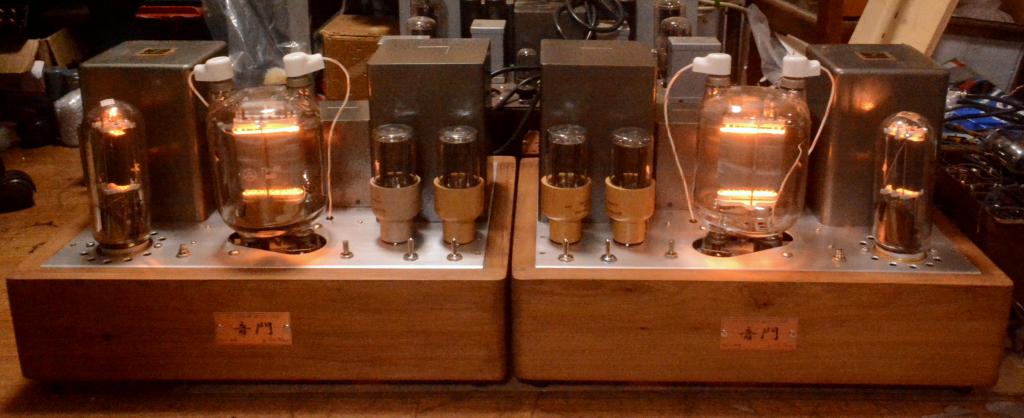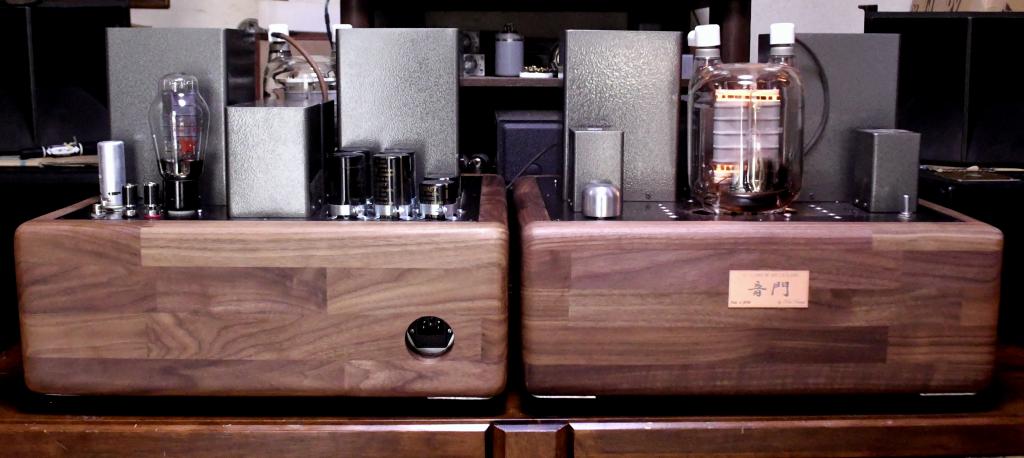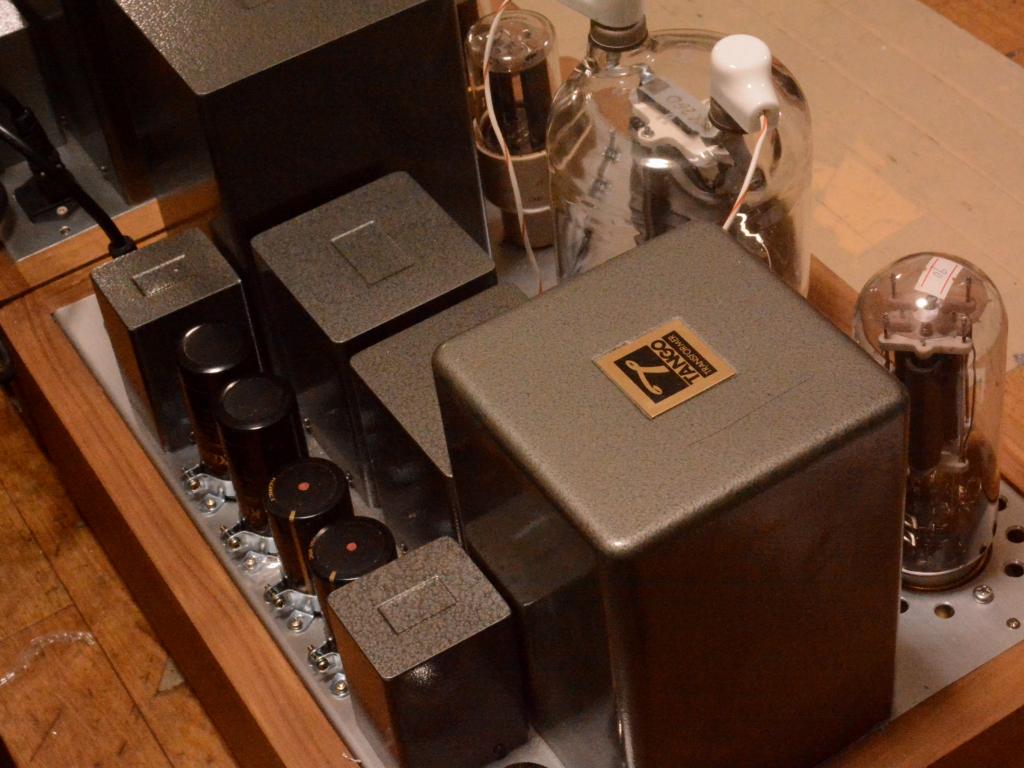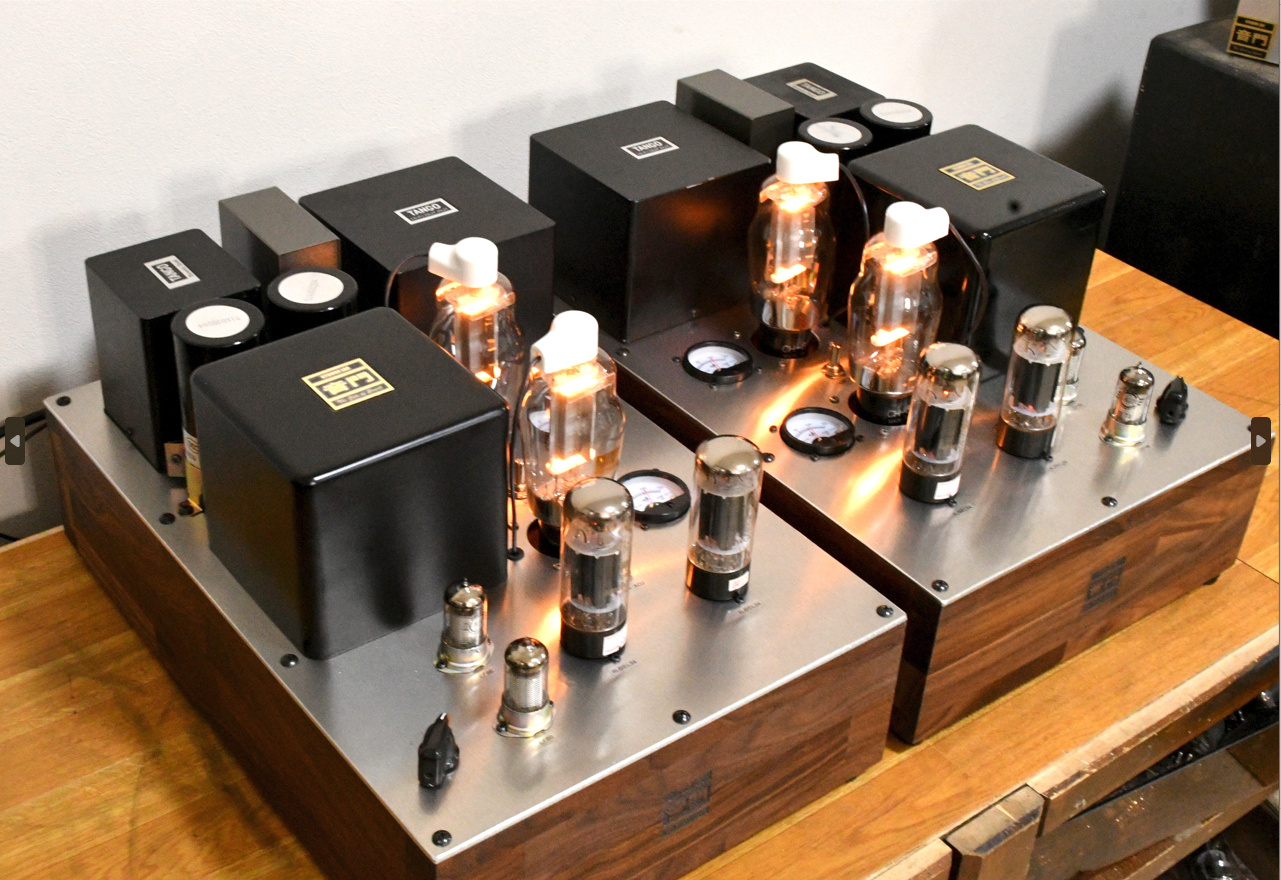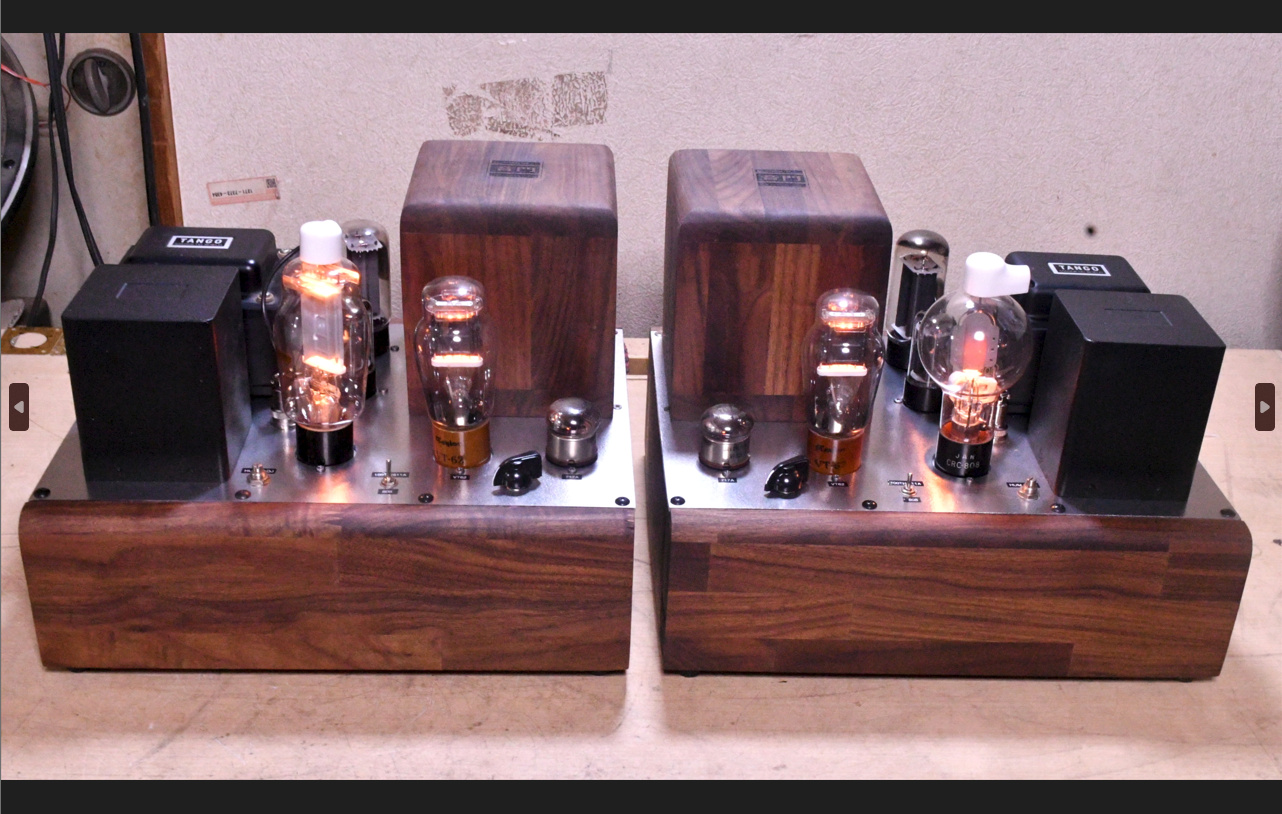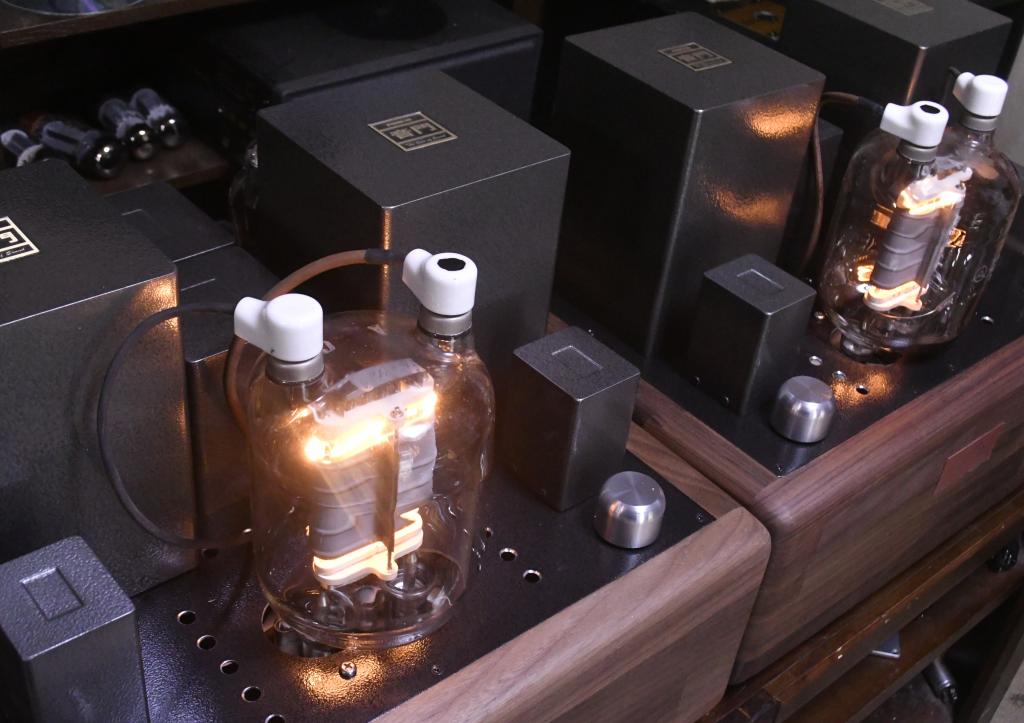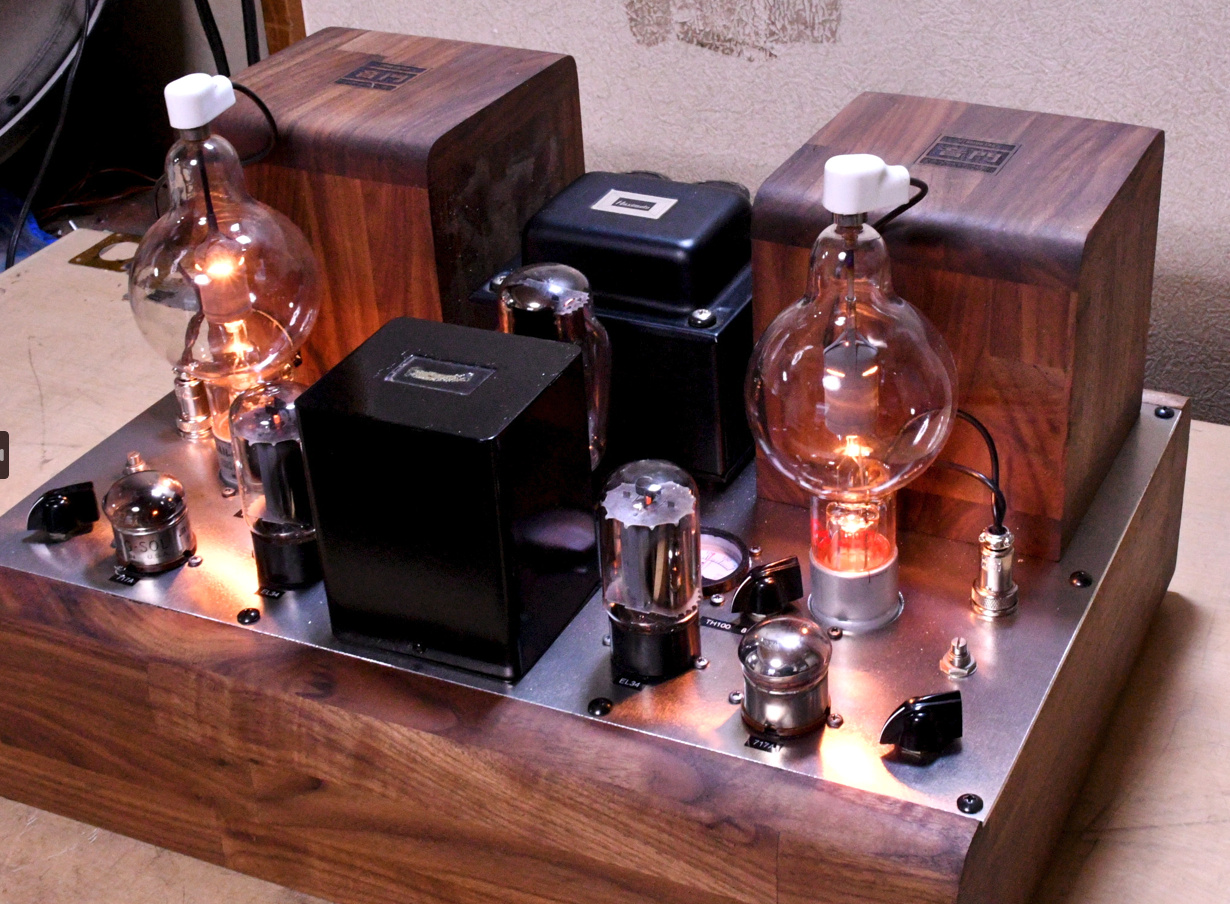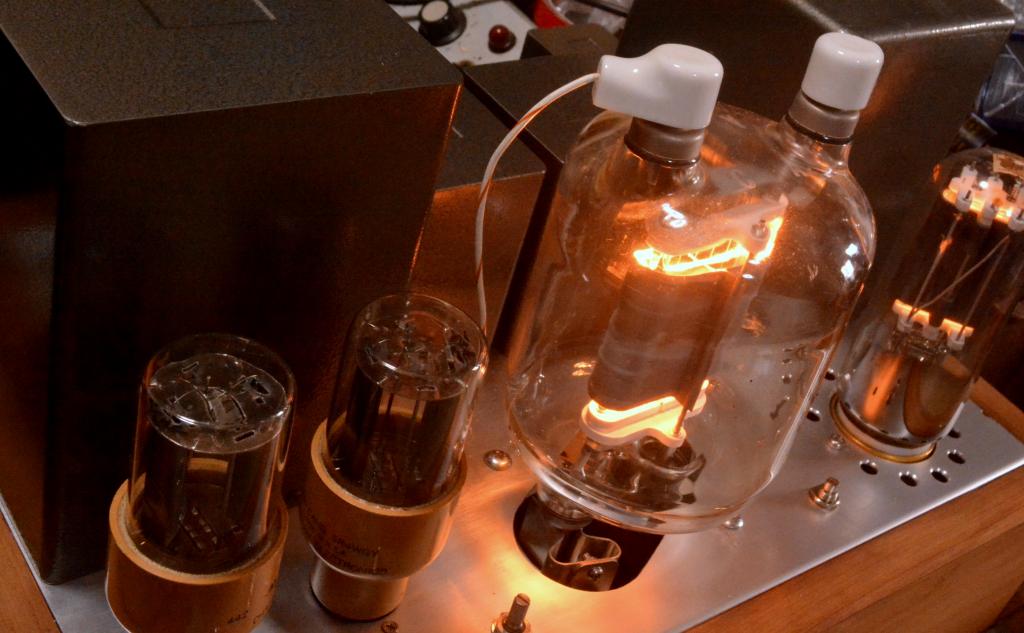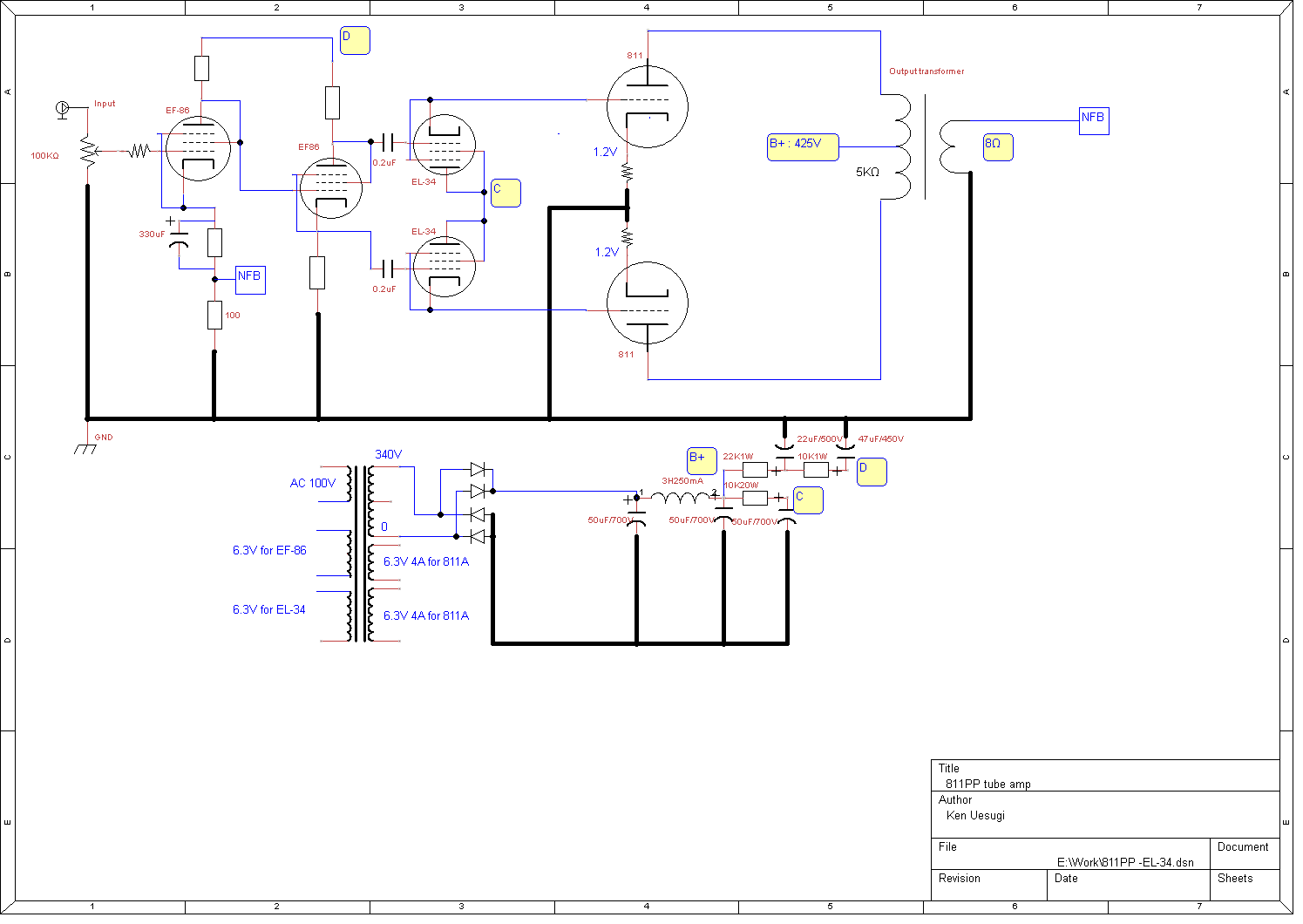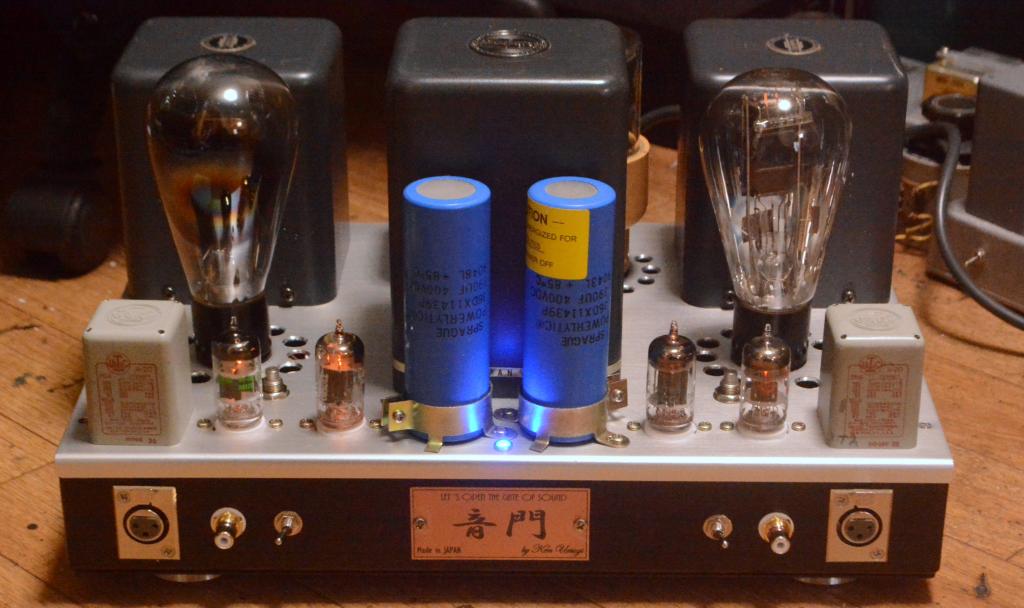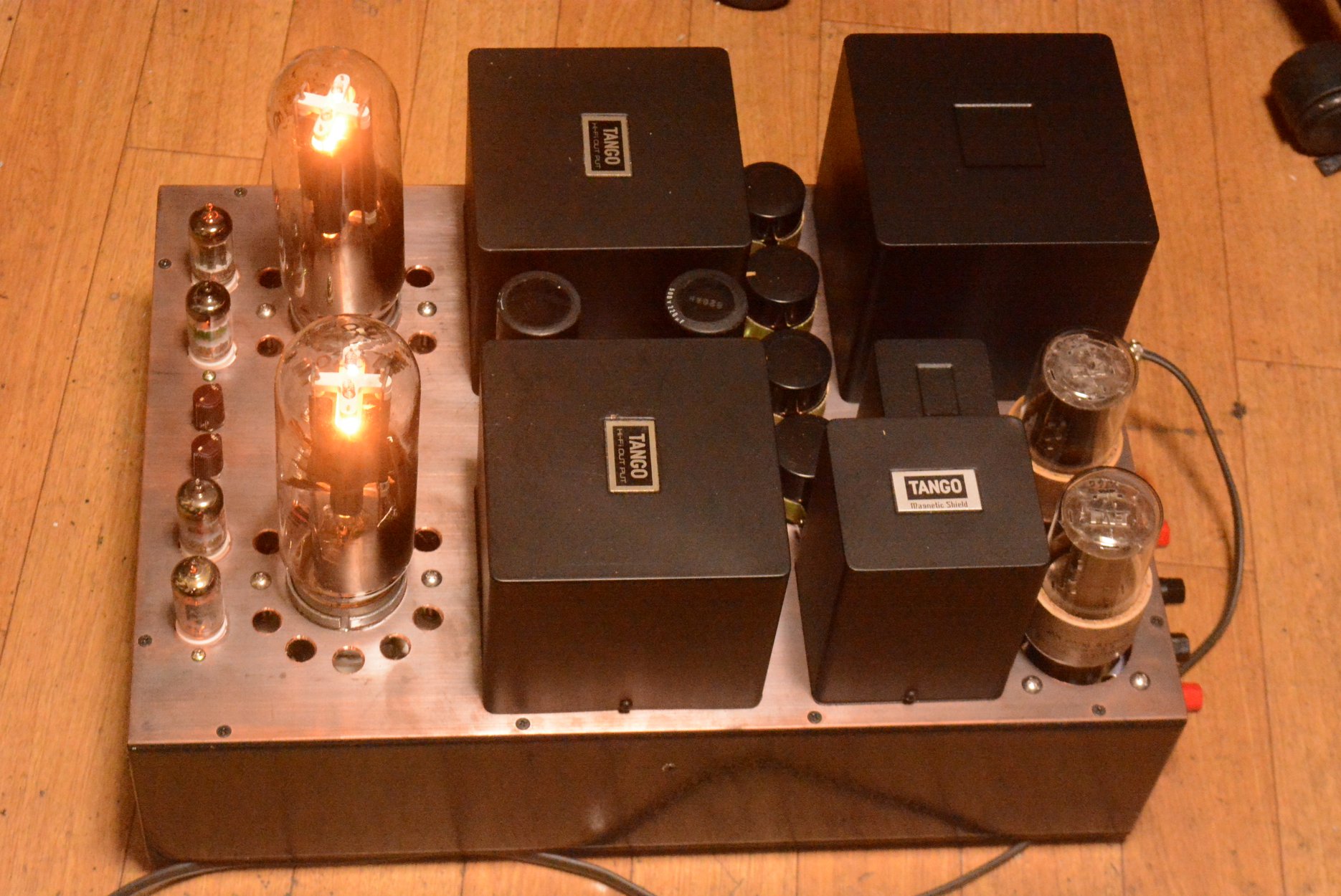We can provide power transformer which use for 117V, 220V, 230V, 240V.
YouTube channel > Otomon YouTube Channel
Facebook Channel: Otomon Vintage FB
YouTube channel > Otomon YouTube Channel
Facebook Channel: Otomon Vintage FB
I will give discount 10% or more for all item in my eBay listing, Contact Us for more detail
Class A2, dynamic coupling for transmission tube
What is class A2 ?
Class A2 is when you provide positive voltage (VDC+) to the grid of tube not as class A1 (negative voltage VDC-)
When class A2 ?
Using class A2 make current flow in the tube become higher with lower voltage to compare to class A1, with almost tube, you can use class A2 but with audio tube, as 300B, PX4, 2A3 using class A2 may make the tube life become shorter.
Class A2 should apply for transmission tube which load line in positive grid is very good, tube is very strong which can be handled with very high current
Why class A2 ?
With Class A2, you can set plate voltage lower than A1 and let more current flow inside the tube. Because of big current flowing on the plate, the bass sound will be more power, the energy of sound is better while you dont need to provide much of voltage to plate of tube as class A1.
Why not ?
Class A2 need much of current to plate so it should be applied to strong tube as transmission tube which can handle thousands of voltage and hundred of mA current in plate. And it needs a bigger output transformer that need to handle hundred of mA in primary.
How to build an amp with class A2
Because of positive grid voltage, there is much of current in tube grid, so it needs tube in driver stage must be strong enough to driver the power tube. The current in plate of driver tube must be higher than current in grid of power tube. In class A1 we dont need to care to this thing. There are many schematics that is being used for class A2 tube amplifier. One of the most famous is IITC of Mr Shishido. He use interstage transformer but in secondary, he reverted the connection of secondary winding, so the current in secondary winding is opposite pharse with primary, and it helps the distortion of driver stage will be deleted, prevent the magnetic saturation in the transformer. The theory is very simple but you have to control the current in grid of power tube sothat it can not be higher than current of driver tube, or not your transformer will be damaged. You must know exactly the connection of transformer, if you connect the wrong phase, transformer will be damaged because the current flow in primary will be same phase with secondary and the distortion could not be delete and there will be magnetic saturation in the transformer.
Dynamic coupling for class A2
Dynamic coupling is coupling method that driver stage connect directly to power stage. The grid current will control the plate current in tube of driver stage, the bias of driver stage will decide the plate current, so as the current flow on power tube changes, the grid of power tube will be changed and the plate current of driver stage will be changed too. The driver stage of current is changed dynamically as driver the power tube, so it is called dynamic coupling.
I attach some example of dynamic coupling amplifier that I have made.
Class A2 is when you provide positive voltage (VDC+) to the grid of tube not as class A1 (negative voltage VDC-)
When class A2 ?
Using class A2 make current flow in the tube become higher with lower voltage to compare to class A1, with almost tube, you can use class A2 but with audio tube, as 300B, PX4, 2A3 using class A2 may make the tube life become shorter.
Class A2 should apply for transmission tube which load line in positive grid is very good, tube is very strong which can be handled with very high current
Why class A2 ?
With Class A2, you can set plate voltage lower than A1 and let more current flow inside the tube. Because of big current flowing on the plate, the bass sound will be more power, the energy of sound is better while you dont need to provide much of voltage to plate of tube as class A1.
Why not ?
Class A2 need much of current to plate so it should be applied to strong tube as transmission tube which can handle thousands of voltage and hundred of mA current in plate. And it needs a bigger output transformer that need to handle hundred of mA in primary.
How to build an amp with class A2
Because of positive grid voltage, there is much of current in tube grid, so it needs tube in driver stage must be strong enough to driver the power tube. The current in plate of driver tube must be higher than current in grid of power tube. In class A1 we dont need to care to this thing. There are many schematics that is being used for class A2 tube amplifier. One of the most famous is IITC of Mr Shishido. He use interstage transformer but in secondary, he reverted the connection of secondary winding, so the current in secondary winding is opposite pharse with primary, and it helps the distortion of driver stage will be deleted, prevent the magnetic saturation in the transformer. The theory is very simple but you have to control the current in grid of power tube sothat it can not be higher than current of driver tube, or not your transformer will be damaged. You must know exactly the connection of transformer, if you connect the wrong phase, transformer will be damaged because the current flow in primary will be same phase with secondary and the distortion could not be delete and there will be magnetic saturation in the transformer.
Dynamic coupling for class A2
Dynamic coupling is coupling method that driver stage connect directly to power stage. The grid current will control the plate current in tube of driver stage, the bias of driver stage will decide the plate current, so as the current flow on power tube changes, the grid of power tube will be changed and the plate current of driver stage will be changed too. The driver stage of current is changed dynamically as driver the power tube, so it is called dynamic coupling.
I attach some example of dynamic coupling amplifier that I have made.
Almost vintage tube amplifier used NFB in ampififier because 50 years before, people did not have technical enough to make a good output transformer and they must use NFB to make the sound better. In WE91A amp, Western used too much gain in driver stage for much of NFB. But 50 years before, people used very good core and material for transformers, although the spec of transformers is not good, the sound is still good to someone.
So why some people say that NFB is not good ? Look at how NFB signal flow works, you can see the output sound is combine from input sound and a small part of output, and more or less the sound was changed. Much of NFB will make much of sound to be changed. NFB also change the phase of output singal. That is why some mania dislike the sound of NFB, it makes sound lost the refresh and become slower.
Using NFB in amp is very difficult, it will be the best if you use NFB that make the sound better but does not affect much to the sound. You have to choose the proper NFB, a little NFB will not change the sound but not make anything better, use much NFB will make sound data become better but the sound become not good. You have to calculate and hear by your ear to find a proper value of NFB. Because NFB make the phase of output signal changed so if you use too much NFB, sometimes it will become positive feedback and make your device damaged.
That is why in almost KIT amp, there is no NFB, because it is too complicated to handle and sometimes it makes your speakers damage if you solder one wire in wrong place.
So, what is proper NFB ? you can see NFB level in db, for example (-)3db, (-)6db vvv..v.. The lower NFB value (far from 0db), the more NFB is put on your amp. Personally, NFB should not be lower -6db, lower than that rate, the sound changing can be found clearly by ear and not good. Luxman SQ-38FD or WE-91A that I mentioned above used NFB -15db or more.
Almostly in my power amp, I dont use NFB because the technical data is good enough and no need to use NFB to make it more beautiful. But in some case from customer requirement or to stabilize the low frequency, I use very slight NFB(-3~-6db), almost can not see difference between NFB or no NFB, just a feeling only.
The attachment is example that in some cases I have to use NFB although the data is beautiful and vice versa. One is 71A drive 71A PSE with output power 1.9W, hum level is 0.6mV, response frequency 16Hz~40KHz, another is 71A PP, output power 2.5W, hum level 0,1mV, response frequency 10Hz~60Khz. Look at technical data of 2 amps, the SE amp needs use NFB to reduce the hum, PP is very good and no need NFB, but in fact, the SE amp is No NFB and the PP amp has -3db NFB, because I found that the low frequency of 71A PP is not stabilize because of high gain from driver stage.
You dont have common fomular to all amp, which is good or bad, just hearing and trying until you are satisfy with your amp.
So why some people say that NFB is not good ? Look at how NFB signal flow works, you can see the output sound is combine from input sound and a small part of output, and more or less the sound was changed. Much of NFB will make much of sound to be changed. NFB also change the phase of output singal. That is why some mania dislike the sound of NFB, it makes sound lost the refresh and become slower.
Using NFB in amp is very difficult, it will be the best if you use NFB that make the sound better but does not affect much to the sound. You have to choose the proper NFB, a little NFB will not change the sound but not make anything better, use much NFB will make sound data become better but the sound become not good. You have to calculate and hear by your ear to find a proper value of NFB. Because NFB make the phase of output signal changed so if you use too much NFB, sometimes it will become positive feedback and make your device damaged.
That is why in almost KIT amp, there is no NFB, because it is too complicated to handle and sometimes it makes your speakers damage if you solder one wire in wrong place.
So, what is proper NFB ? you can see NFB level in db, for example (-)3db, (-)6db vvv..v.. The lower NFB value (far from 0db), the more NFB is put on your amp. Personally, NFB should not be lower -6db, lower than that rate, the sound changing can be found clearly by ear and not good. Luxman SQ-38FD or WE-91A that I mentioned above used NFB -15db or more.
Almostly in my power amp, I dont use NFB because the technical data is good enough and no need to use NFB to make it more beautiful. But in some case from customer requirement or to stabilize the low frequency, I use very slight NFB(-3~-6db), almost can not see difference between NFB or no NFB, just a feeling only.
The attachment is example that in some cases I have to use NFB although the data is beautiful and vice versa. One is 71A drive 71A PSE with output power 1.9W, hum level is 0.6mV, response frequency 16Hz~40KHz, another is 71A PP, output power 2.5W, hum level 0,1mV, response frequency 10Hz~60Khz. Look at technical data of 2 amps, the SE amp needs use NFB to reduce the hum, PP is very good and no need NFB, but in fact, the SE amp is No NFB and the PP amp has -3db NFB, because I found that the low frequency of 71A PP is not stabilize because of high gain from driver stage.
You dont have common fomular to all amp, which is good or bad, just hearing and trying until you are satisfy with your amp.
The Other Same Items
Newest Items In Same Category

